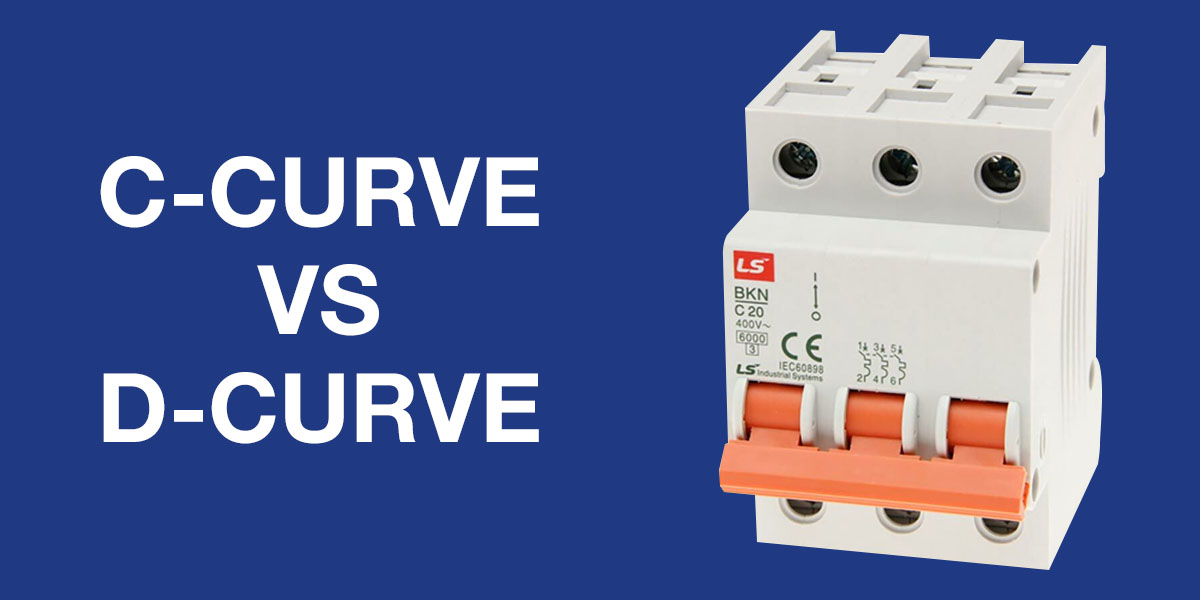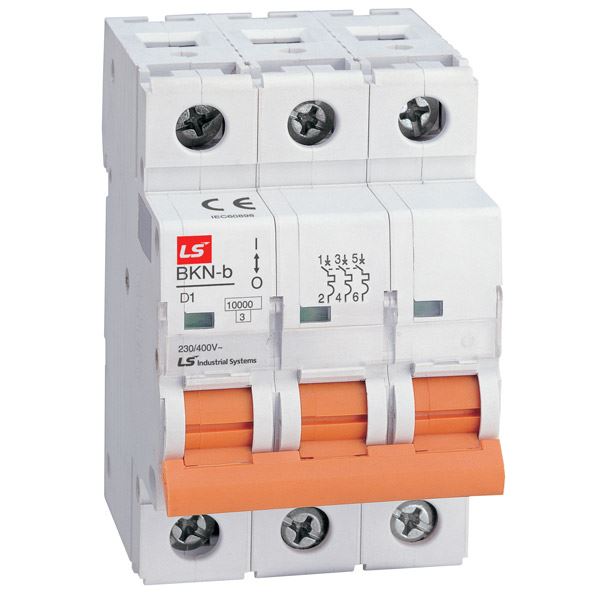How does a MCB work?
Thermal magnetic circuit breakers, which are the type found in most distribution boards, incorporate both techniques with the electromagnet responding instantaneously to large surges in current (short circuits) and the bimetallic strip responding to less extreme but longer-term over-current conditions. The thermal portion of the circuit breaker provides an "inverse time" response feature, which trips the circuit breaker sooner for larger overcurrent’s but allows smaller overloads to persist for a longer time. On very large over-currents during a short-circuit, the magnetic element trips the circuit breaker with no intentional additional delay
Reference: Wikipedia
C Curve
This type of MCB trips between 5 and 10 times full load current. This is used in commercial or light industrial type of applications where there could be chances of higher values of short circuit currents in the circuit. The common applications are fluorescent lighting and general power points.
D Curve
This type of MCB trips between 10 and 20 times full load current. These MCBs are use in specialty industrial / commercial uses where current inrush can be very high. The common applications include transformers or X-ray machines and electric motors.
Because one type cannot do it all, we stock a range of different curve options including C, D and K (for PV solar applications).
We stock a large range of all different current ratings. Below is a link to our shortform with our common C and D curve options.
Below is a link to our solar store with our common K curve options (for PV solar applications).
Also on request we can supply B curve breakers from LS.
LS MCBs are bought to you by LS Industrial Systems, a division of LG Electronics.


